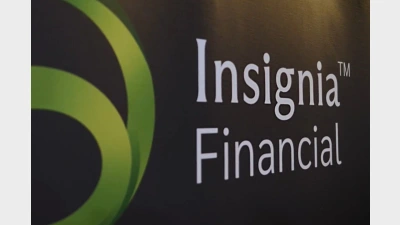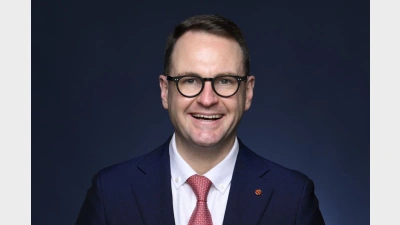Making sense of the super highway
The current superannuation environment is a watershed moment for superannuation administrators, according to Stuart Korchinski, managing director of KAZ, the Telstra subsidiary that owns administrator Australian Administration Services (AAS).
“The days when you can just provide service, answer questions and change addresses [are gone] … if that’s all you do you’ve missed the point and you’re going to struggle progressively in the future.”
In a marketplace undergoing fundamental change, “administrators are going to have to change their [business] models, and we’re pedalling fast to do that”, Korchinski says.
While the introduction of choice of fund has been a key development impacting the industry recently, to say that he blames choice itself for the increasing complexity of administrators’ roles, or sees this as an innately bad thing, is to oversimplify his position.
Rather, he and other prominent spokespeople see choice as just one factor leading to increased volatility and causing more members to transition between and consolidate superannuation funds.
A flow-on effect of choice has been an increase in competition, resulting in a marketing war in which smaller funds in particular are fighting to retain their share of the existing superannuation member base.
“Organisations [that were] previously service oriented [and] didn’t have to compete for members are now having to compete. That’s introduced a whole additional complexity to our business models,” Korchinski says.
From the administrators’ perspective, the upshot of the push into advertising and marketing is increased member enquiries. According to AAS figures, the number of phone calls per member per year has increased by 20 per cent.
A corresponding increase in the average time it takes to address these enquiries also suggests an increase in the complexity of member requests.
Boosting the size of its call-centre and hiring staff with more life experience, who are able to better empathise with members enquiring about retirement savings, has been one approach adopted by AAS.
“[We’ve been] looking for people who have life experience, not just school leavers, but those who can relate to the financial needs of people on the phone,” Korchinski says.
Pillar general manager, marketing, Mark Luciano recognises a touch of irony in the marketing efforts of trustees. With individuals being exhorted to take an interest in their superannuation by industry, government and the media, he sees the workload of Pillar and other administrators increasing exponentially.
Luciano says this is good from the member perspective, but from the administrators’ point of view, in an industry acknowledged to have high volumes and low margins, the service expectations are increasing.
“Something’s obviously got to give. This means [we need] better technology and more people, neither of which come cheap.
“At the moment, [trustees] think that all they’ve got to do is a marketing spend, and I don’t know that it’s occurred to a lot of them that if the marketing spend is successful, it will trigger an administration spend,” he says. “The administrator can’t continue to have their work volumes increased by substantial percentages for the same number of members.”
Coupled with the imperative to compete is the increasing compliance burden; administrators need to be able to do more to service members in a regulatory environment that is becoming more rather than less restrictive.
“Our businesspeople need to be able to explain why people should stay with a fund or join a fund — this is the question that this advertising is now leading to,” explains Korchinski. “Working out how to respond to customer queries driven by advertising is really quite complex,” he says, referring to the need for operators to walk the fine line between information and advice.
“The importance of advice really does come home at a time of choice. This ability to sell is probably one of the biggest implications of increasing complexity — I’d say it’s probably one of the most significant if not the most significant.”
The proposed changes stemming from the Federal Budget have also created challenges. In particular, Korchinski refers to the added incentive the proposed changes give members to keep superannuation money in a pension post-retirement.
“We don’t only need to look after members during the accumulation phase, but also need to have a seamless way of offering them pensions,” he says. “This is another level of complexity — we need IT and product people who know how pensions work, [we] have to engage with clients to develop products they want [and] to offer systems that allow for [the delivery of] low cost pension payments.”
He points out that the proposed Government decision to offer individuals aged over 60 tax free access to superannuation money could bring an upswing in the number of transactions from super funds. “Because it’s tax free, it’s sort of dip-in, dip-out. Suddenly we’re looking like an authorised deposit-taking institution, but we’re not,” Korchinski explains.
“We have to make sure that the line doesn’t get crossed and that we can accommodate these sorts of customer preferences.”
The introduction of the Australian PrudentialRegulation Authority’s Responsible Superannuation Entity (RSE) licensing regime caused a significant decline in the number of trustees, and it is reasonable to surmise that this has had an effect on administrators.
On this point, Korchinski and Superpartners chief executive Frank Gullone hold differing views.
Korchinski’s view is that this contraction in the number of trustees is not being mirrored in the administration market. “No, there hasn’t [been a decrease in administrators], in fact there’s been more of an increase lately, as we’ve seen IBM enter the market,” he says, believing the increasing amount of member contact will see more reliance on administrators, creating more business opportunities for both existing suppliers and new entrants. “We see it as opportunity rather than downside.”
Conversely, Gullone thinks the number of administrators is falling. “I think the number [of administrators] is declining similar to the funds. As they decline, the suppliers [of administration services] will decline,” he says, also mentioning the impending sale of AAS.
One point they agree on is that the process of administering superannuation funds is more difficult now than in the past. Both mention the importance of competing on price. According to Gullone, “administration is becoming much more intensive, competitive and complex; keeping the price down is becoming more difficult”.
When the same question is asked of Korchinski, his response is: “Yes, volatility has increased … The traditional, stable business model has become more volatile, and that’s harder for organisations to manage when you’ve got to continually deliver consistent high-quality service.”
Gullone says that while some competitors can reduce costs by off-shoring call-centre or other back-office business units, this is not an option for Superpartners because it has a clear policy against such practices.
Another common point raised by Gullone and Korchinski is trustee numbers. Both believe that, for the time being, the number of trustees will remain relatively stable, but another round of rationalisation could occur after the next 12 to 24 months as trustees digest the realities of the RSE licensing regime.
“It looks stable over the next year or two, but after a couple of years of licensing and choice we’ll see another step down in the number of trustees,” Korchinski says. “If requirements are found to be more onerous than expected, more trustees may exit the market.”
Having to compete with companies that hold both an administration and investment management division is another challenge Gullone identifies. “Typically, when they buffer a service to a target fund, they will undercut the administration but pick it up on the investment management side, but we haven’t got that luxury,” he says.
Gullone sees keeping pace with regulatory changes as one of the greatest challenges for the administration industry, with change to the fee disclosure provisions of the Financial Services Reform Act a recent example.
“Do members see any benefits in those? No, not really, not from day one, but we have to accommodate those,” Gullone says. “The size and level of reporting from a Product Disclosure Statement, and what needs to be reported to members on annual statements, is ever-increasing and that’s adding to a lot of the costs and complexities in what we do.
“[Adopting the changes] takes a huge amount of resources and is fraught with danger — if you get it wrong you could impact millions of accounts. There’s reasonable risk associated with all of that,” he says.
Implementing processes and systems leads to the challenge of remaining competitive on the technology front. Superpartners promotes this as a differentiator. It invests heavily in technology to provide members with ‘live’ data and to allow individual adjustments such as changing investment options online or accessing specific investment indices.
For external administrators, offering such functionality while remaining competitive on price is an ongoing struggle that is not likely to disappear any time soon. This is not an issue that internally administered funds need to deal with, according to Vision Super chief executive Rob Brooks. He says that not having this requirement to maintain a profit margin is a huge benefit for the fund.
“A big thing that’s missing in internal administration is profit margin — we run it at cost, members pay at cost, there’s no profit margin along the way. That really is important to us,” Brooks says.
He strongly disagrees with the argument that there are too many risks involved in running administration internally. “There’s risk whether you outsource it or run it internally. If you outsource it, you don’t outsource the risk, the trustees are still responsible,” he says.
On the contrary, Brooks thinks there can be a high level of risk in engaging the services of an external administrator, because funds can become almost inextricably tied to them.
“In my view, there’s a danger that you become captive of the administrator,” he says, explaining that the complicated process of switching administrators can take up to 12 months. “Trustees can’t afford any interruption — you can’t afford to change administrator and say ‘we can’t take contributions or switches of investment choice for the next month’. That’s part of the problem for trustees, the fear of not being able to meet members’ natural expectations [during any transition].”
While he is not advocating that all funds consider adopting internal fund administration, Brooks thinks that as the larger funds continue to grow, “it’s an inevitable consequence that more and more will bring administration in-house”.
UniSuper is another fund that runs internal administration, and has done so since its inception almost 25 years ago. Chief executive Ann Byrne agrees with the view that there is no ‘one-size-fits-all’ rule for administration: “I think it’s totally a decision for the fund; what is best for them.
“For UniSuper, the great advantage [of internal administration] … is that we can focus on one client: our members and employers. If you’re [with] an external administrator they have a lot of clients, so you have to work much harder with them to make sure you get the right outcome for your members.”
She believes that as long as a fund has sufficient economies, access to appropriate technology and is able to use electronic processes, self-administration is an attractive alternative to using an external provider.
Recommended for you
Future Group is set to take on nearly $1 billion in funds under management (FUM) and welcome more than 100,000 new members following two significant successor fund transfers.
Insignia’s Master Trust business suffered a 1.9 per cent dip in FUA in the third quarter, amid total net outflows of $1.8 billion.
While the Liberal senator has accused super funds of locking everyday Australians out of the housing market, industry advocates say the Coalition’s policy would only push home ownership further out of reach.
Australia’s largest superannuation fund has confirmed all members who had funds stolen during the recent cyber fraud crime have been reimbursed.












